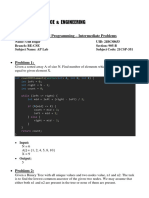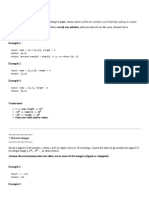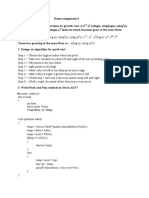0% found this document useful (0 votes)
13 views9 pagesDSA Practice Questions
The document outlines various algorithmic problems and their requirements, including searching in a 2D matrix with sorted rows and columns, suggesting products based on incremental search input, finding or inserting a target score in a sorted list, reordering a linked list by odd and even indices, checking if a linked list is a palindrome, deleting a node from a linked list, simplifying valid parentheses strings, and calculating scores in a baseball game with custom rules. Each problem includes examples and constraints to guide the implementation. The focus is on efficient algorithms and maintaining specific conditions in data structures.
Uploaded by
quantumbytexxCopyright
© © All Rights Reserved
We take content rights seriously. If you suspect this is your content, claim it here.
Available Formats
Download as PDF, TXT or read online on Scribd
0% found this document useful (0 votes)
13 views9 pagesDSA Practice Questions
The document outlines various algorithmic problems and their requirements, including searching in a 2D matrix with sorted rows and columns, suggesting products based on incremental search input, finding or inserting a target score in a sorted list, reordering a linked list by odd and even indices, checking if a linked list is a palindrome, deleting a node from a linked list, simplifying valid parentheses strings, and calculating scores in a baseball game with custom rules. Each problem includes examples and constraints to guide the implementation. The focus is on efficient algorithms and maintaining specific conditions in data structures.
Uploaded by
quantumbytexxCopyright
© © All Rights Reserved
We take content rights seriously. If you suspect this is your content, claim it here.
Available Formats
Download as PDF, TXT or read online on Scribd
/ 9






















































































